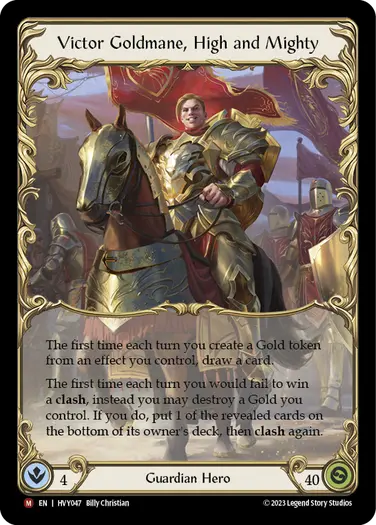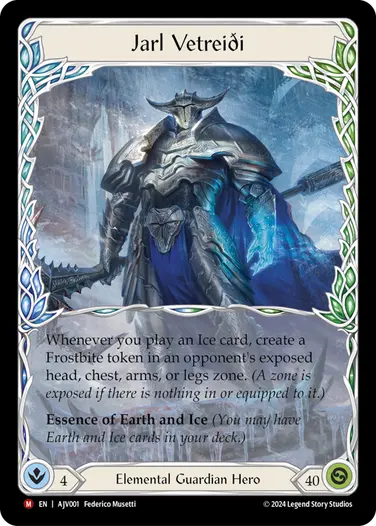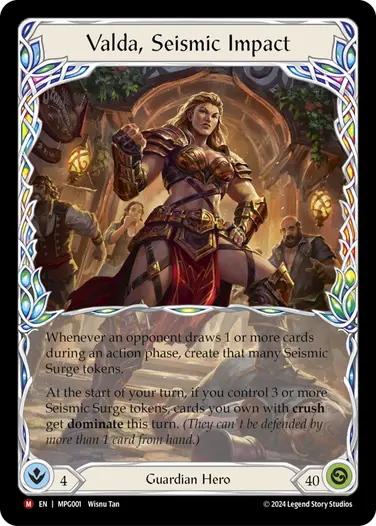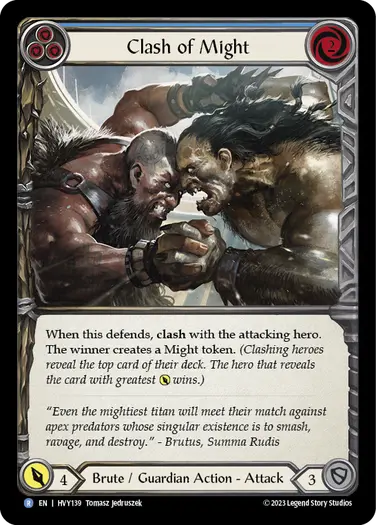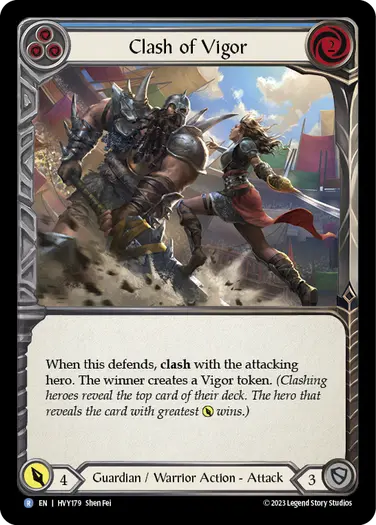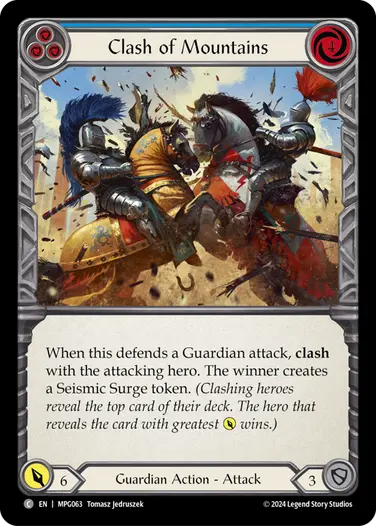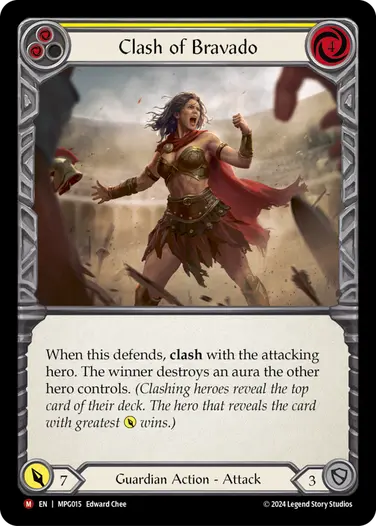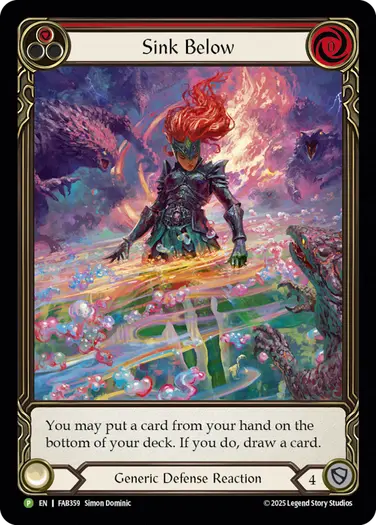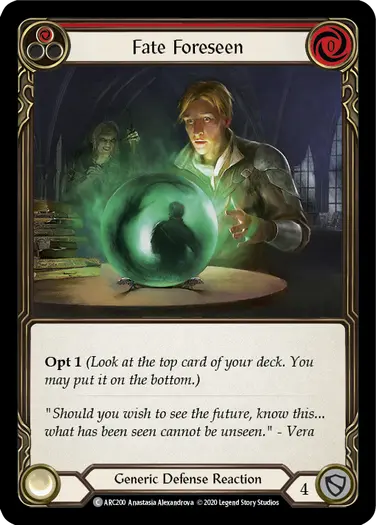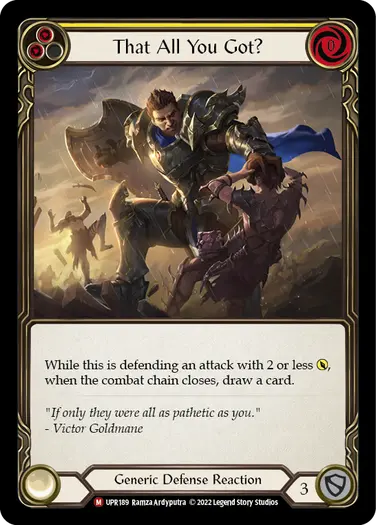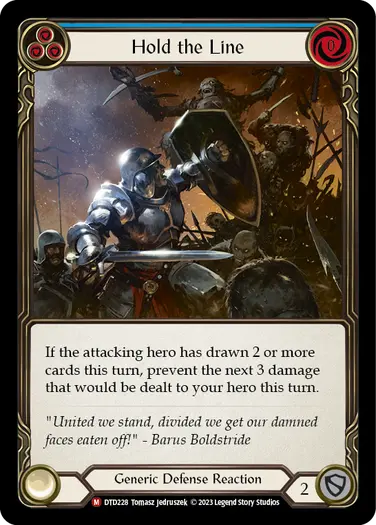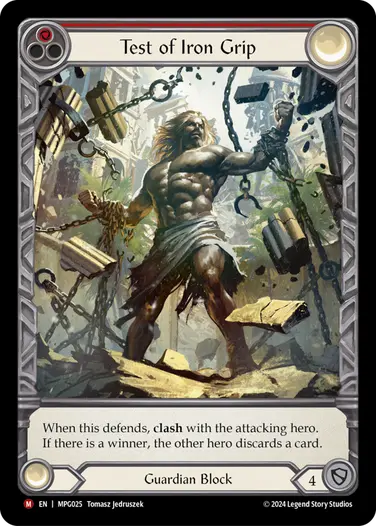Legend Story Studios developer Karol lifts the curtain of the Dev Room so we can take a peek behind the scenes. Learn about the work that went into designing, testing, and evolving the iconic cards you know and love today. Sometimes all a card needs to be great is a Dev Touch!
We've been pushing the boundaries of disruption in Flesh and Blood over the years, and some of the most impactful examples are ones that occur on the opponent's turn. Iyslander giving out Frostbites at instant speed was just the tip of the iceberg - Scowling Flesh Bag and Face Purgatory were the big game changers. They actively asked the opponent to take these into account when planning out their turns - often sequencing their plays differently to avoid getting blown out. With Mastery Pack Guardian, it's the Guardians that get a card of their own that pushes these boundaries further - Test of Iron Grip.
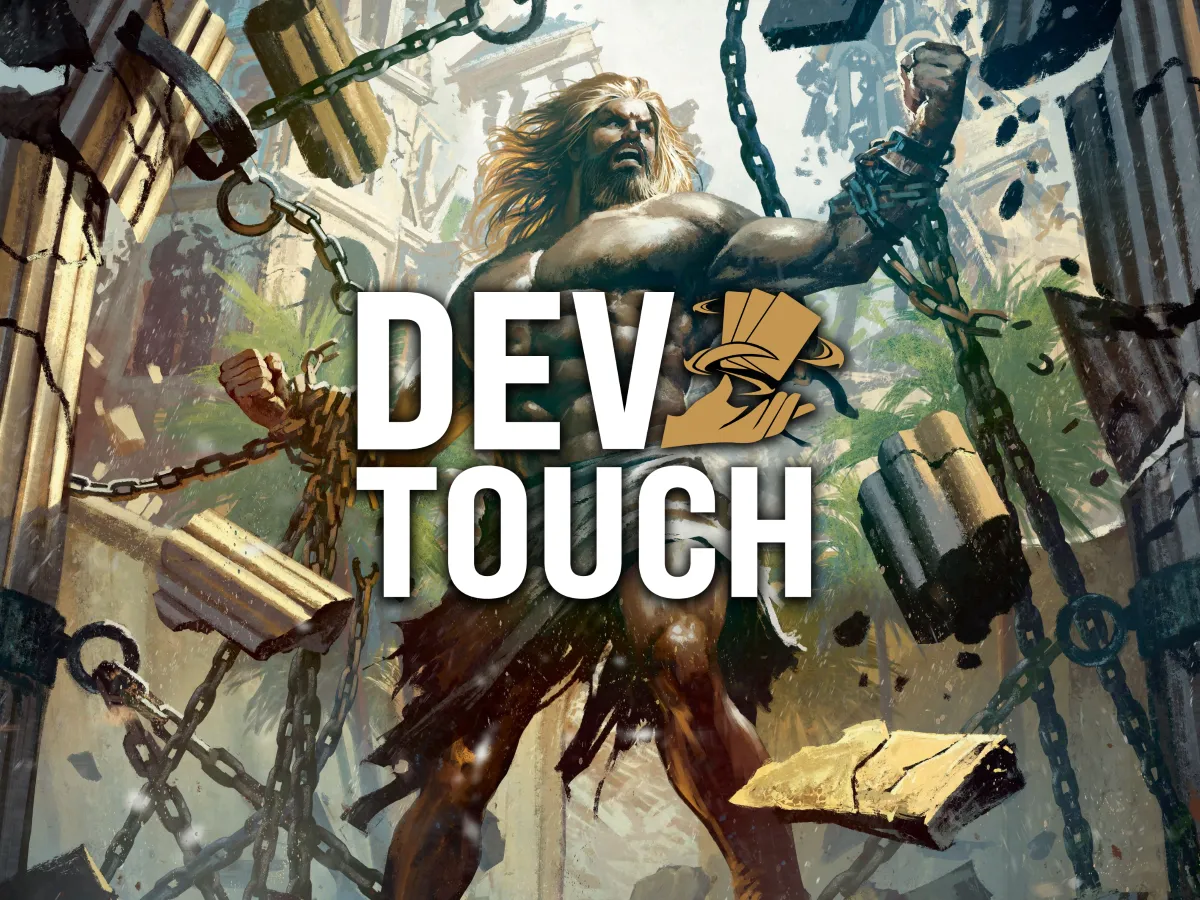
Now, this card started out a little bit different than the final version. Here's the first:
Clash Head On
Guardian Action - Attack
(BLU) 3{r} 5{p} 3{d}
When this defends, clash with the attacking hero. If there is a winner, the other hero discards a card.
The clash effect has a unique strength to it. A well timed discard can completely shut down you opponent’s turn - before reactions! Even during just a set up turn, it could snipe a juicy arsenal target.
The effect was initially quite polarising for the Dev Room. The Guardian enjoyers saw this as a great opportunity to give Guardians a strong staple. The other side of the spectrum saw a card that could take away the agency of the attacking player in a blink of an eye. But there was one thing we all agreed - this was one of the most impactful clashes we've seen to date, winning or losing could blow the game wide open.
As a general rule when testing strong effects, it's much easier to start strong and scale back than the other way around. With Test of Iron Grip, it started as a blue attack action card.
It quickly became apparent that such a game defining effect needed careful consideration - regardless of who won the clash. The stats on the card made it a swift inclusion in our internal Victor Goldmane lists, but as a blue 3-defense, it started to creep into other Guardian lists. Clash Jarl started to pop up, clash Valda, even clash Bravo. While there isn't anything inherently wrong with a clash Majestic seeing play in non-Victor Goldmane Guardians, it highlighted how strong the clash package was becoming, in part thanks to Test of Iron Grip.
Again, something felt off that such a game changing effect was a blue pitch AND an attack... that never actually attacked.
The first thing we looked at was the pitch value. The raw power of this effect warranted it to be a yellow or a red. Yet at yellow and red, it became even stranger that the card was an attack action card. Over and over, each game we'd look at the card as we drew up our hands, and plan around on how this card was going to defend that turn - attacking with it was almost never a consideration.
One of the key aspects of the clash package decks from above, was that the deck had zero to minimum misses on a clash. With enough attack action clash cards, in theory the decks could be built to almost always reveal an attack action card. They might not have been the strongest builds, but just having that low risk for a card like Test of Iron Grip felt off, as the reward was so high. In any clash based deck, with Victor Goldmane being the best example - finding the sweet spot between the strong clash cards and number of non-attack cards is one of the fundamental deckbuilding tensions.
Then it became a block card.
I want to go on a bit of a tangent, as I've been getting a lot of questions about block cards and their purpose from the community. Why did we introduce block cards in the first place when defense reactions are already there?
Defense reactions have an inherently strong baseline - for years we have seen red Sink Below and red Fate Foreseen make lists. The baseline defensive capability is in itself worthy of including in decks, meaning the design space is capped on how strong additional abilities can be. Simply put, because of their defensive flexibility, it's hard to make defense reactions better. Cards like That All You Got? and Hold the Line have interesting tension, where they benefit from specific scenarios opponents go through, but still, they can just sit in the arsenal until they shine to their maximum potential.
Block cards, while more rigid than defense reactions, open up the design space for what their abilities can do. They can be stronger, because they can't be arsenaled - they're essentially tied to the turn cycle they appear on. Test of Iron Grip fits that mold perfectly - a card that triggers when defended with, with an impactful effect, that cannot be timed by being played out from arsenal.
You may notice we released a clash card as an attack action card in the form of Clash of Bravado. While on the surface the same reasoning could apply, Clash of Bravado is tailored in its card type and power to be the anti-Illusionist tool. It can pop phantasm attacks while being able to potentially deal with pesky auras.
In the end, we settled on a red 4-defense block card. In many instances, giving up the blue pitch for an extra point of defense was actually an upgrade, and really solidified Test of Iron Grip as one of the main power cards in the clash package.
